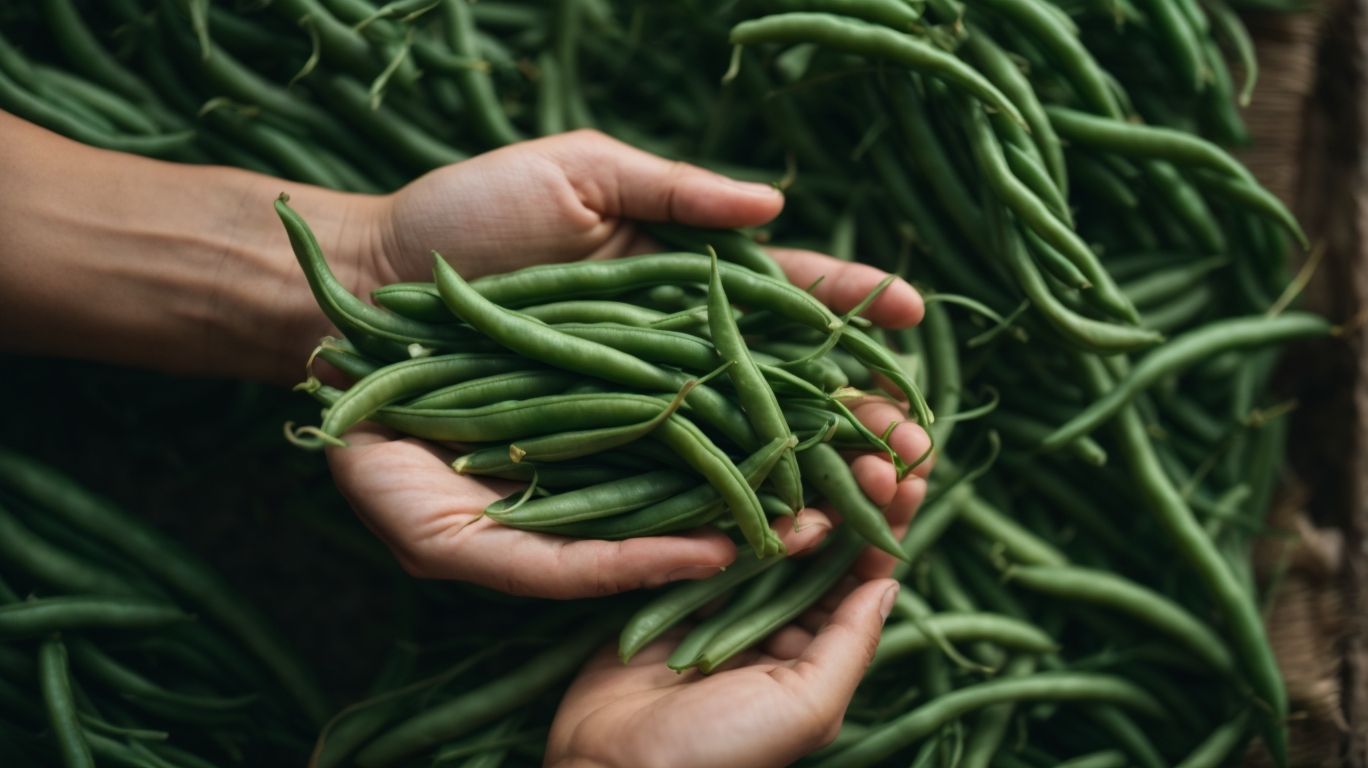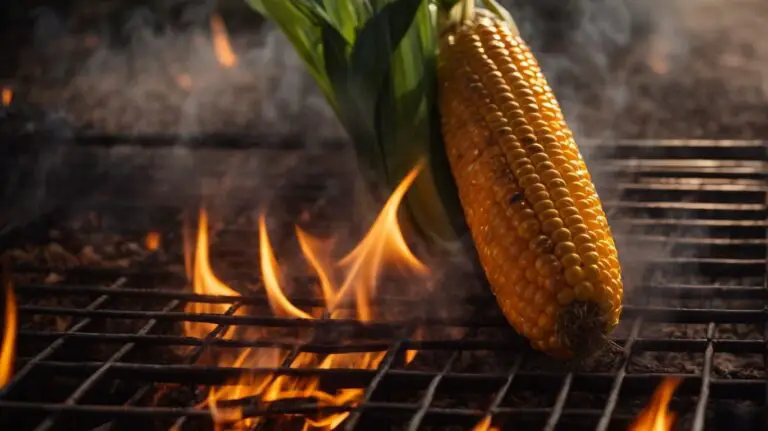How to Cook Green Beans From the Garden?
Curious about how to cook green beans straight from your garden?
We will explore what green beans are, the different types available, and the ideal growing conditions for these delicious veggies.
From planting and harvesting tips to various cooking methods and flavor enhancements, we’ve got you covered.
Whether you prefer boiling, steaming, sautéing, roasting, or grilling, we’ll show you how to make the most of your garden-fresh green beans.
Stay tuned for some mouthwatering recipes and expert tips!
Key Takeaways:
What are Green Beans?
Green beans, also known as string beans or snap beans, are a versatile vegetable often used as a side dish in various cuisines.
These slender and crisp pods are rich in nutrients, fiber, and antioxidants, making them a popular choice for health-conscious individuals. Green beans can be easily incorporated into salads, stir-fries, casseroles, and even soups to add a vibrant color and a crunchy texture.
One classic recipe involves blanching the beans in boiling water for a few minutes until they are tender-crisp, then sautéing them with garlic, butter, and a sprinkle of almonds for a flavorful dish.
What are the Different Types of Green Beans?
Green beans come in various types, including stringless beans, French beans, and Kentucky Wonder beans, each offering unique flavors and textures.
Stringless beans, as the name suggests, are easy to prepare as they don’t require the tedious task of removing strings. They have a tender texture and a mild flavor, making them versatile in salads or stir-fries.
- French beans, also known as haricot verts, are slender and tender with a slightly sweet taste. They are often used in French cuisine, blanched and then quickly sautéed with garlic and butter.
- Kentucky Wonder beans are more robust in flavor and have a slightly rougher texture compared to other green beans. They are great for slow-cooking in stews or soups for added depth of taste.
How to Grow Green Beans in Your Garden?
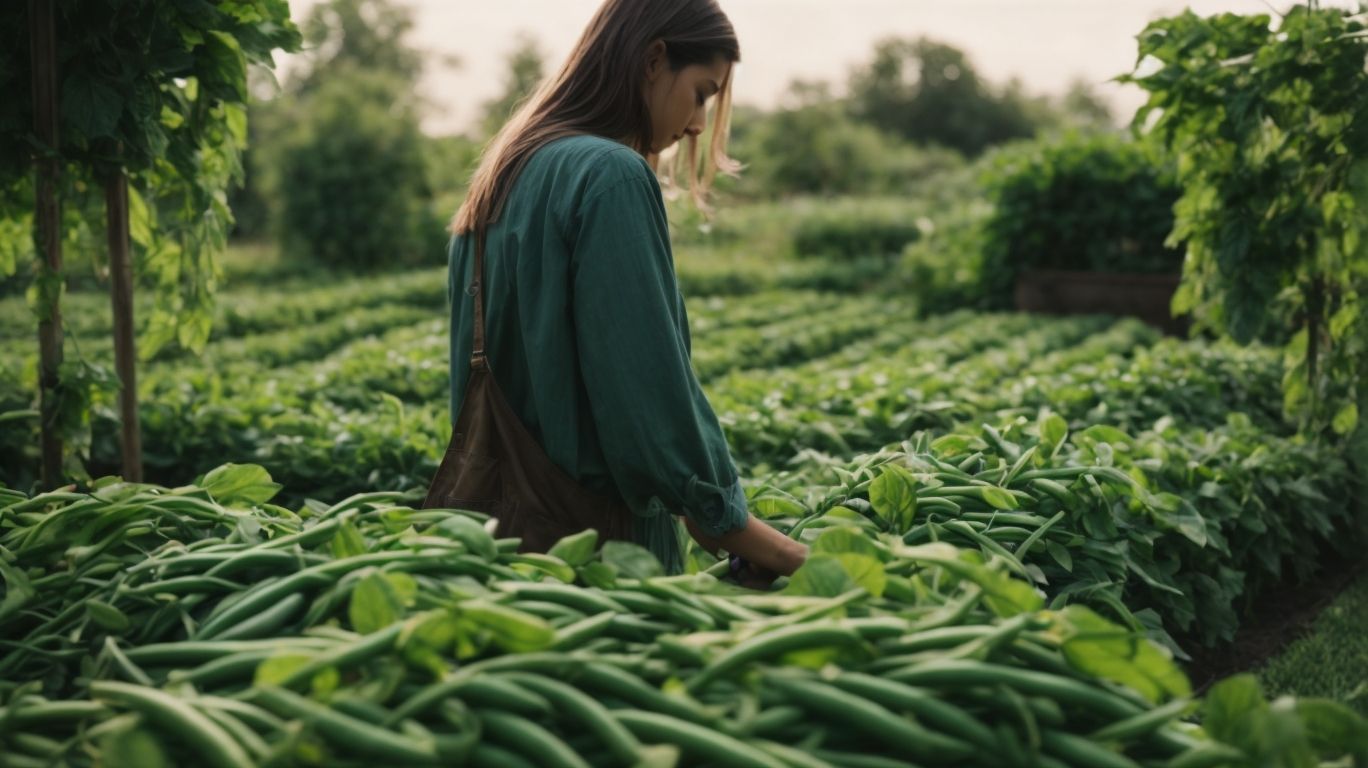
Credits: Poormet.Com – Billy Nguyen
Growing green beans in your garden is a rewarding experience that requires proper soil preparation, sunlight exposure, and regular watering.
When growing green beans in your garden, it’s important to choose a location with well-draining soil that receives at least 6-8 hours of sunlight per day. Before planting, amend the soil with organic matter like compost to improve nutrient retention. For best results, sow the beans directly into the soil after the last frost date, spacing them about 4-6 inches apart in rows. Consider companion planting carrots alongside your green beans to enhance soil health and deter pests naturally. Remember to water consistently, providing around 1 inch of water per week, and watch your garden flourish with these simple yet effective techniques.
What are the Ideal Growing Conditions for Green Beans?
Green beans thrive in well-drained soil with a pH level between 6.0 and 6.8, requiring moderate watering to maintain consistent moisture levels.
Regarding soil, green beans appreciate a loose, sandy loam that allows for proper aeration and root development. They should be planted in an area that receives full sun exposure for at least 6-8 hours a day to support their growth. Watering is crucial, but overwatering can lead to root rot, so it’s essential to strike a balance. Proper drainage is essential for the health of the plants, as excessive water retention can cause issues like mold and mildew.
How to Plant Green Beans in Your Garden?
Planting green beans involves sowing seeds directly in the garden after the last frost date, ensuring proper spacing and providing a gentle watering with ice water to promote germination.
Before you start sowing the beans, it is crucial to prepare the seeds by soaking them in water for a few hours to help kickstart the germination process, ensuring quicker and more successful growth. When planting, make sure to bury the seeds about 1 to 1.5 inches deep in well-draining soil, allowing them to establish root systems. To maintain adequate spacing, plant the seeds approximately 2-4 inches apart in rows that are set about 18 inches apart, providing ample room for the beans to grow and thrive.
When to Harvest Green Beans?
Green beans are ready for harvest when the pods are crisp, tender, and reach a mature size, typically about 2-4 weeks after flowering.
When checking the readiness of green beans, look for pods that are firm to the touch with a vibrant green color. The beans inside should be plump but not overly bulging, indicating optimal freshness. To ensure optimal flavor, it’s essential to harvest green beans at the right time. Timing is crucial as overripe beans can become tough and lose their delicate flavor. To enjoy the full potential of fresh beans, consider seasoning with salt to bring out their natural taste and enhance their overall appeal.
How to Prepare Green Beans for Cooking?
Preparing green beans for cooking involves washing them thoroughly, trimming the ends, and drying them with paper towels to remove excess moisture.
Start by rinsing the green beans under cold running water to remove any dirt or residue.
Next, line the beans up on a cutting board and trim off the stem ends using a sharp knife. Be sure to discard any discolored or damaged beans. After trimming, pat the beans dry with paper towels to prevent them from becoming soggy during cooking. A dry surface will also help the beans to sear and brown evenly for optimal flavor. Take extra care to ensure thorough drying, especially for dishes where the beans are to be sautéed or roasted.
How to Wash and Trim Green Beans?
Washing and trimming green beans is essential to remove dirt and ensure uniform length, with the option to add minced garlic for extra flavor during the preparation process.
Before washing the beans, inspect each one carefully to remove any damaged or discolored parts.
Start by rinsing the green beans under cool water and gently rubbing them to eliminate any dirt or residue.
Trim the ends of the beans using a sharp knife or kitchen shears, ensuring they are all cut to a consistent size.
To enhance the flavor profile, consider sautéing the beans with minced garlic in olive oil for a delicious twist.
Remember, cleanliness and uniformity are key when working with beans and garlic to achieve a delectable dish.
What are the Different Ways to Cut Green Beans?
Green beans can be cut into various shapes, including diagonal slices, French cuts, or julienne strips, offering versatility in cooking methods and presentation, with the option to drizzle olive oil for added richness.
Diagonal slices are great for maintaining the bean’s natural curve and can add an elegant touch to stir-fries or vegetable medleys. On the other hand, French cuts, where the beans are thinly sliced lengthwise, provide a delicate appearance and quicker cooking time, perfect for salads or sautéing. If you opt for julienne strips, the thin matchstick-like pieces are ideal for light and crispy stir-fries or garnishing dishes. Whichever cutting style you choose, a final touch of drizzled olive oil can enhance the flavors and textures of the beans, making them a delightful addition to any meal.
What are the Best Cooking Methods for Green Beans?
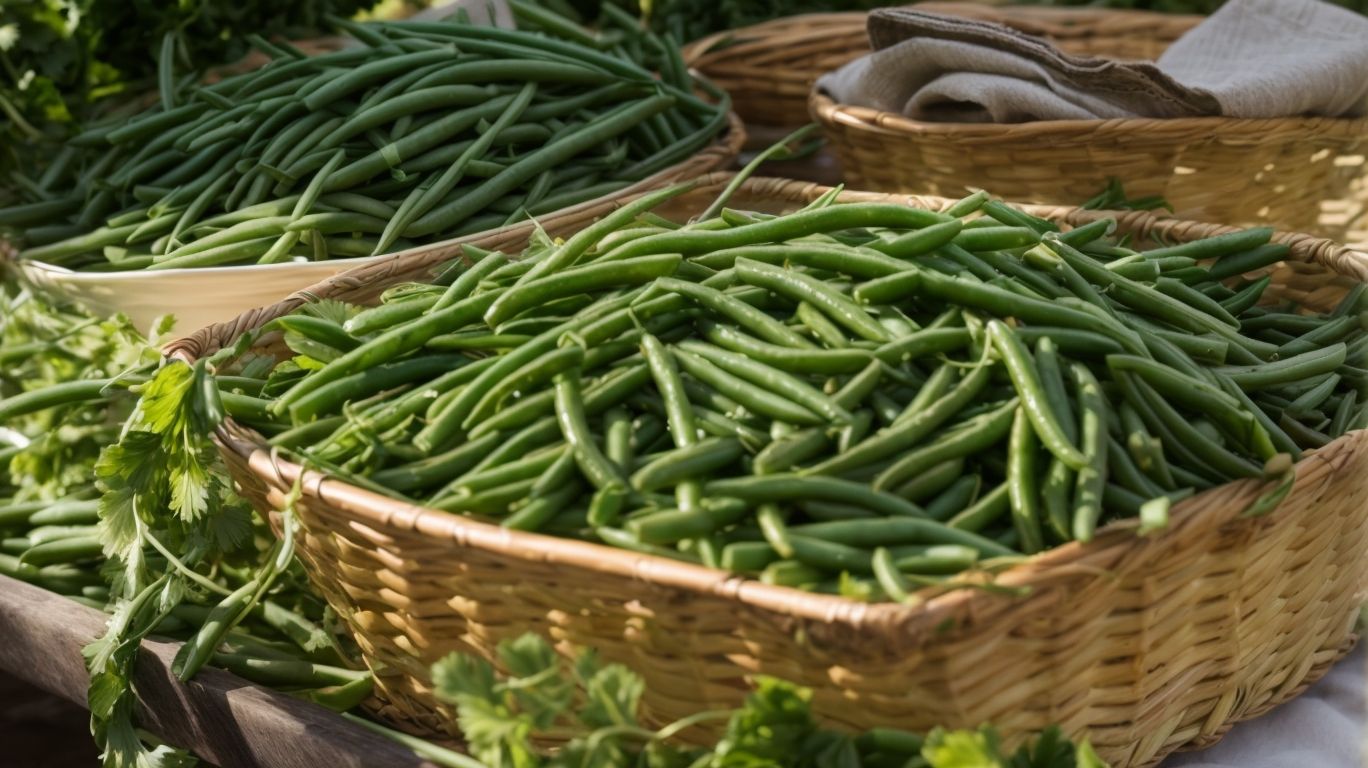
Credits: Poormet.Com – Philip Mitchell
Green beans can be cooked using various methods such as boiling, steaming, sautéing, roasting, or grilling, each offering unique flavor profiles and textures to enhance the dish.
To boil green beans, simply add them to a pot of boiling water with a pinch of salt for about 5-7 minutes until tender yet crisp; for a healthier alternative, steaming the beans retains more nutrients and color.
Sautéing green beans in a hot skillet with garlic and butter adds a rich, savory element, while roasting in the oven with olive oil, salt, and pepper brings out a caramelized sweetness.
Grilling green beans over high heat imparts a smoky char that pairs well with the fresh crunch. Experimenting with these techniques and incorporating butter can elevate your green bean recipes to new heights of flavor and satisfaction.
Boiling Green Beans
Boiling green beans is a simple method that retains their vibrant color and crisp texture, making them ideal for salads, casseroles, or pasta dishes.
When boiling green beans, it’s important to start with fresh beans and a pot of well-salted water brought to a rapid boil. Blanching the beans for about 3-4 minutes until they are bright green but still crisp is the key to preserving their vibrant color and texture.
After blanching, immediately transfer the beans to an ice bath to halt the cooking process and lock in their freshness. For salads, toss the cooled beans with a zesty dressing or vinaigrette. In casseroles, mix them with creamy sauces and top with breadcrumbs for a crunchy finish. When adding them to pasta dishes, sauté them briefly with garlic and olive oil for a flavorful addition.
Steaming Green Beans
Steaming green beans is a healthy cooking method that retains nutrients and natural flavors, making them a perfect addition to salads or as a side dish seasoned with lemon juice.
When you steam green beans, the gentle cooking process helps preserve their vibrant color and texture while maintaining their nutritional value. By avoiding the excessive heat of other cooking methods, steaming ensures that the beans stay crisp and flavorful. When adding them to a salad, the steamed green beans provide a delightful contrast in both taste and texture, complementing other ingredients perfectly. As a side dish with a drizzle of fresh lemon juice, the bright citrus flavor enhances the natural sweetness of the beans, creating a refreshing and satisfying dish.
Sautéing Green Beans
Sautéing green beans in olive oil and garlic enhances their natural flavors and textures, with the option to blanch them beforehand for a quick and delicious side dish.
Blanching the green beans involves briefly immersing them in boiling water, followed by shockingly cold water to halt the cooking process. This step not only helps to preserve the vibrant green color of the beans but also ensures they maintain a crisp texture when sautéed. By blanching the beans first, you can also reduce their overall cooking time, making this dish a perfect go-to option for a last-minute addition to any meal.
Roasting Green Beans
Roasting green beans with a sprinkle of salt and olive oil creates a crispy and caramelized exterior, offering a delightful flavor profile suitable for various dishes.
When roasting green beans, preheat your oven to 425°F (220°C) for optimal results. Toss the beans in a bowl with a drizzle of olive oil, ensuring they are evenly coated. Next, spread them out on a baking sheet in a single layer, making sure not to overcrowd the pan. Sprinkle a pinch of salt over the beans to enhance their natural flavors as they roast. Roast in the oven for about 15-20 minutes, or until the beans are tender with a slight crispiness.
Grilling Green Beans
Grilling green beans alongside carrots and other vegetables imparts a smoky flavor and charred appearance, creating a delicious and nutritious addition to any barbecue or meal.
When grilling green beans, the heat caramelizes their natural sugars, enhancing their sweetness and adding a delightful crunch. Pairing these beans with carrots, bell peppers, and zucchini not only brings a vibrant mix of colors to your plate but also provides a variety of textures and flavors. For a flavor boost, drizzle some olive oil, sprinkle a pinch of garlic powder, and add a squeeze of lemon before grilling. This combination creates a harmonious medley that perfectly complements grilled meats or serves as a standalone vegetarian delight.
How to Enhance the Flavor of Green Beans?
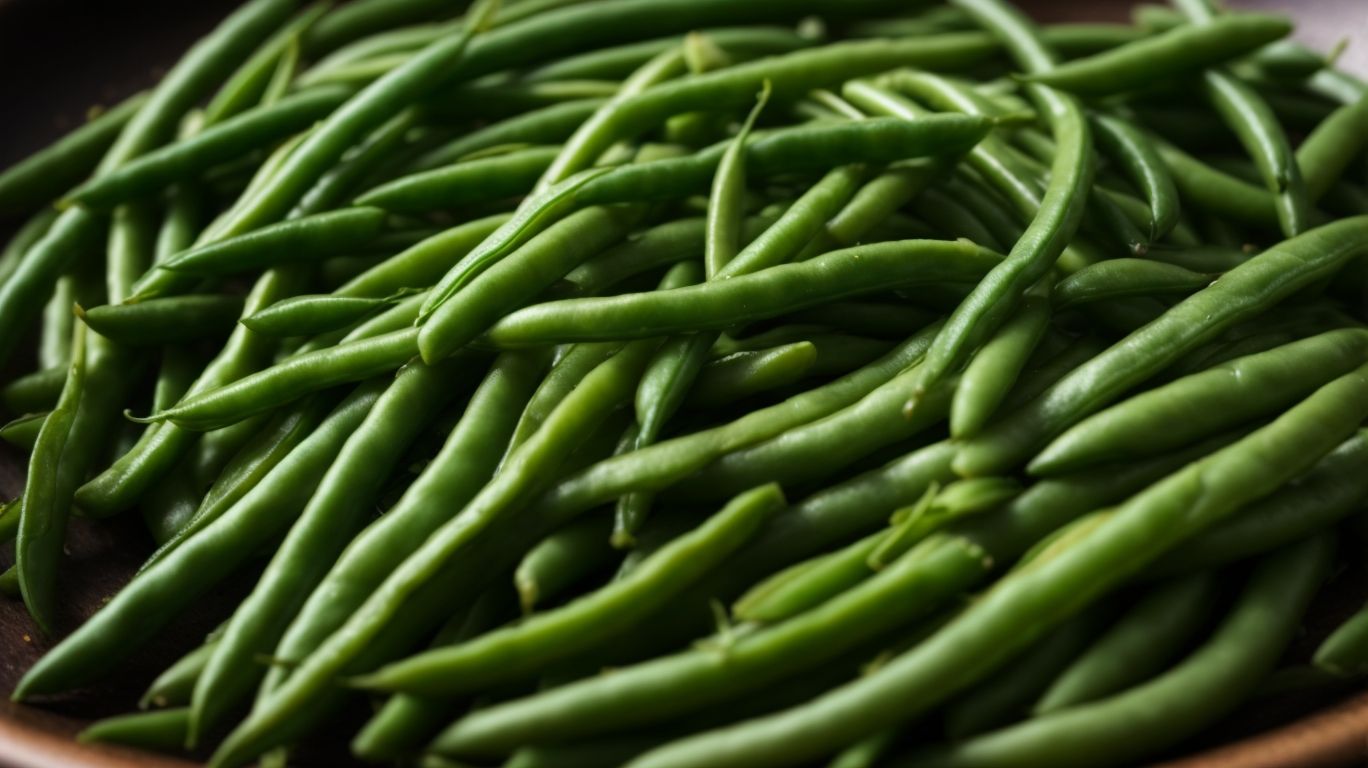
Credits: Poormet.Com – Gregory Lee
To elevate the flavor of green beans, consider seasoning them with herbs, spices, or citrus zest, and incorporating them into pasta dishes for a satisfying meal.
One delicious way to infuse green beans with flavor is to sauté them in garlic-infused olive oil and finish with a sprinkle of fresh parsley for a burst of freshness. Ideas for enhancing pasta dishes include tossing blanched green beans with toasted pine nuts and a squeeze of lemon juice for a tangy twist.
Alternatively, try roasting green beans with a combination of thyme, lemon zest, and a dash of red pepper flakes to bring out their natural sweetness and add a hint of heat. These flavorful options not only enhance the pasta texture but also complement the overall dish beautifully.
Seasoning Green Beans
Seasoning green beans with butter, salt, pepper, and a dash of lemon juice can elevate their taste profile and complement various dishes, from casseroles to roast dinners.
When preparing green beans, it’s crucial to ensure they are fresh and vibrant to achieve the best flavor. To start, wash the beans thoroughly and trim the ends before cooking. In a skillet, melt a generous amount of butter and add in the green beans. Season them with a pinch of salt and pepper to taste. Squeeze some fresh lemon juice over the beans to brighten the flavors. For recipes, consider incorporating these seasoned green beans into a savory casserole or serving them alongside a succulent roast dinner for a delightful culinary experience.
Adding Flavorful Ingredients to Green Beans
Adding ingredients like caramelized onions, toasted almonds, or roasted carrots can enhance the flavor and texture of green beans, creating a delicious and visually appealing side dish.
When preparing green beans with caramelized onions, the sweetness and depth of the onions complement the earthiness of the beans, resulting in a harmonious flavor profile. Toasted almonds add a satisfying crunch and nuttiness, elevating the texture and providing a contrast to the tender beans. Roasted carrots contribute a pop of color and natural sweetness, balancing the savory elements of the dish.
To create a standalone recipe, consider adding a hint of lemon zest or a sprinkle of fresh herbs to brighten the flavors and add a refreshing twist. Green bean recipes with these versatile ingredients can be served alongside roasted meats, grilled fish, or even as a vegetarian main course.
How to Store Green Beans?
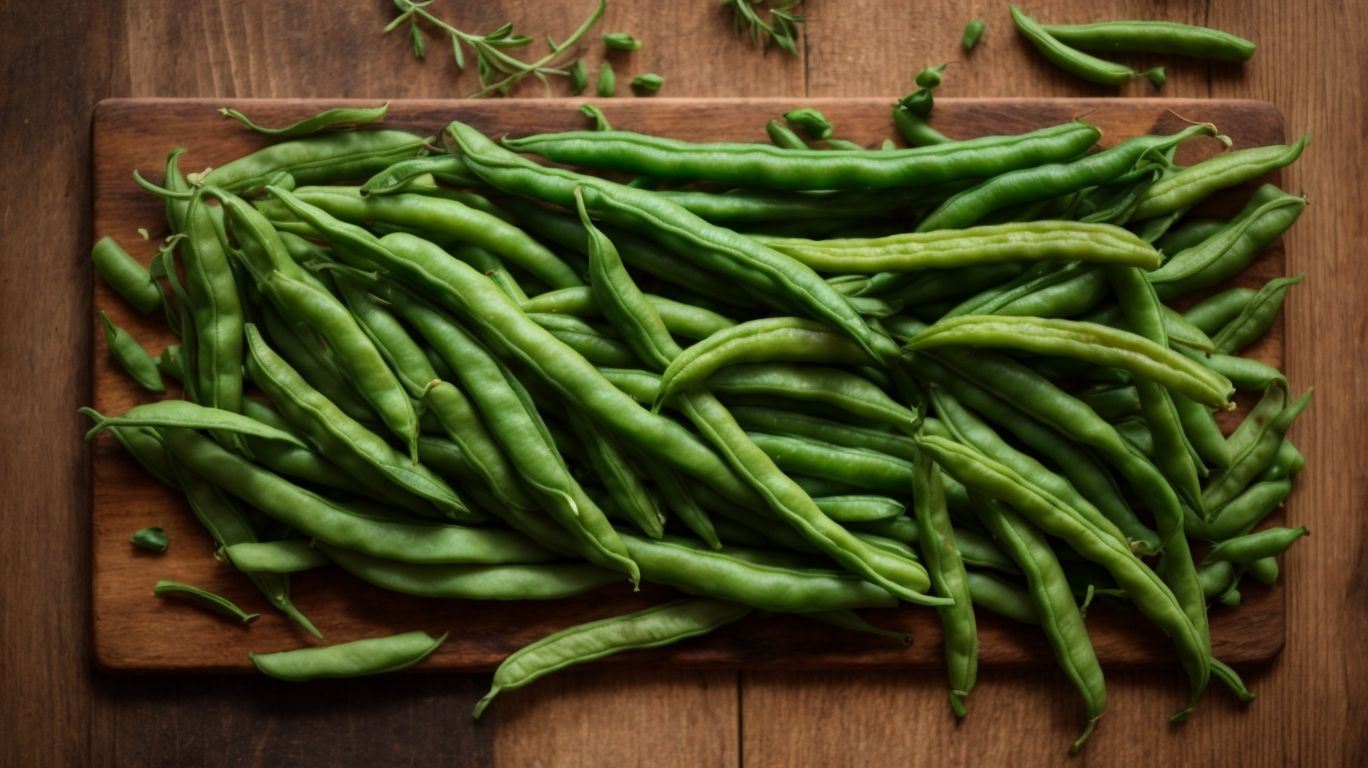
Credits: Poormet.Com – Jeremy Torres
Storing fresh green beans in a perforated plastic bag in the refrigerator helps maintain their crispness and flavor, while blanching and freezing them with a sprinkle of salt preserves them for longer storage.
When storing fresh green beans in the refrigerator, it is crucial to keep them in a perforated plastic bag to allow proper air circulation. This method helps prevent moisture buildup, which can cause the beans to deteriorate quickly.
Blanching the green beans before freezing them not only helps retain their vibrant color and texture but also ensures food safety by deactivating enzymes that cause spoilage. A sprinkle of salt during the blanching process not only enhances the flavor but also contributes to preserving the beans’ quality during freezing.
What is the Best Way to Store Fresh Green Beans?
The best way to store fresh green beans is to wrap them in a damp paper towel and place them in a breathable container in the refrigerator to maintain their moisture and crispness, with the option to drizzle olive oil before storing for added flavor.
By wrapping the green beans in damp paper towels, you create a microclimate that mimics their natural environment, keeping them fresh for a longer period. The breathable container allows for proper air circulation, preventing moisture buildup that could lead to spoilage. Drizzling a bit of olive oil before refrigerating not only enhances the flavor but also helps create a protective barrier, locking in the beans’ freshness.
How to Freeze Green Beans?
Freezing green beans after blanching them in boiling water and ice can extend their shelf life, making them convenient additions to future dishes like pasta salads or stir-fries.
To freeze green beans post-blanching for long-term storage, start by draining them thoroughly and patting them dry with paper towels to remove excess moisture. Next, spread the green beans in a single layer on a baking sheet lined with parchment paper or a silicone mat to prevent sticking. Place the baking sheet in the freezer until the beans are completely frozen. Once frozen, transfer the green beans to airtight freezer bags or containers, label them with the date, and store them in the freezer for up to 6-8 months.
Frequently Asked Questions
How to Cook Green Beans From the Garden?
What is the best way to prepare fresh green beans from the garden?
The best way to cook green beans from the garden is by blanching them in boiling water for a few minutes until they turn bright green, then immediately plunging them into ice water to stop the cooking process.
Can I cook green beans from the garden without blanching them first?
While it is possible to cook green beans from the garden without blanching, it may result in a tougher texture. Blanching helps to soften the beans and bring out their vibrant color.
How do I know when the green beans from my garden are ready to be harvested?
Green beans are usually ready to be harvested when they are about 3-4 inches long and have a firm texture. You can also gently bend the bean, and if it snaps easily, it is ready to be picked.
What are some creative ways to cook green beans from the garden?
Aside from the traditional boiling or steaming methods, you can also try roasting, stir-frying, or even grilling your green beans from the garden. Experiment with different seasonings and flavors to find your favorite way to enjoy them.
How should I store green beans from the garden?
Green beans are best stored in the refrigerator in a plastic bag or container. They can also be blanched and frozen for longer storage. Just make sure to label and date them before putting them in the freezer.
Can I eat raw green beans from the garden?
While it is safe to eat raw green beans from the garden, they may not be as palatable compared to when they are cooked. Raw green beans have a tough and fibrous texture, so it is recommended to cook them before consuming for a better taste.

